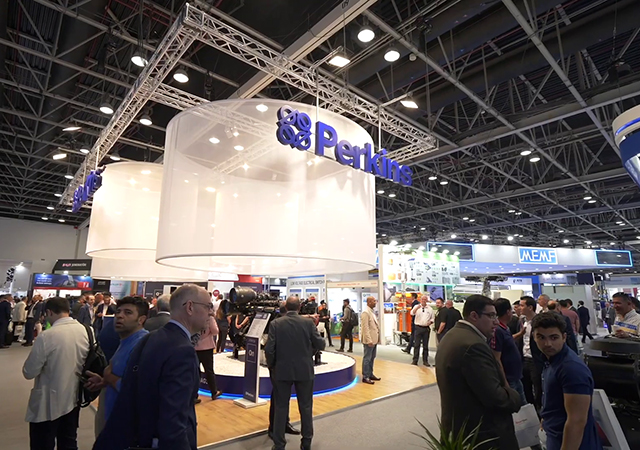
 A Saudi Aramco facility: the expected increase in oil revenues could be too optimistic
A Saudi Aramco facility: the expected increase in oil revenues could be too optimistic
Despite the rise in oil prices, Saudi Arabia’s growth will remain subdued due to the reduction in oil production included in the November 30 oil cut deal and subdued policy support, a report said, adding that in the longer run, the kingdom’s effort to transition its economy away from oil should gradually allow growth to pick up.
The kingdom’s gross domestic product (GDP) will grow 0.8 per cent in 2017, which is down 0.4 percentage points from last month›s projection. In 2018, the panel expects GDP to rise 1.8 per cent, forecasts the January edition of the FocusEconomics Consensus Forecast – Middle East & North Africa.
In November, inflation fell to 2.3 per cent from 2.6 per cent in October. A strong currency and weak domestic activity is leading the recent disinflation trend. FocusEconomics Consensus Forecast panelists expect inflation to average 3.1 per cent this year, which is down 0.3 percentage points from last month’s projection. Next year, the panel sees inflation averaging 3.9 per cent.
Tough austerity measures in response to a deteriorating fiscal position prompted the economy to slow to an over three-year low in the third quarter (Q3). High interbank rates due to the government’s heavy borrowing in local financial markets, reduced spending and the delay of some investment projects are hurting economic growth, points out the report.
On the upside, the rise in oil prices, coupled with high oil supply, is cushioning the economy against a sharp downturn. That said, the expected reduction in oil production following the Opec’s meeting in November is clouding the outlook for the all-important hydrocarbon sector. In an attempt to avoid a repeat of 2016’s austerity, the government included higher spending in the 2017 budget. However, its oil revenue projections appear to be too optimistic and analysts warn that spending will not actually increase this year if some payments made last year are finally included in the 2016 budget.
GROWTH DECELERATES IN Q3
Economic activity deteriorated markedly in Q3 as a result of negative spillovers stemming from the government’s sharp fiscal consolidation process. GDP expanded 0.9 per cent annually, which was below the 1.4 per cent rise in Q2 and the weakest expansion since Q1 2013. The kingdom’s large fiscal deficit is the result of the fall in oil prices over the past two-and-a-half years, which has hit the economy mainly via two channels. Firstly, the government is heavily relying on domestic borrowing to fund its rampant fiscal deficit. This is sending interbank rates to multi-year highs, squeezing liquidity and, ultimately, hurting business activity. Secondly, the government implemented harsh austerity measures over the course of last year, such as reductions in public sector bonuses and allowances, government spending and capital expenditures, it said.
“While these measures will have a positive economic impact in the long-term, the immediate consequence is slower growth. As a result of the kingdom’s economic situation, activity in the non-oil sector contracted 0.7 per cent annually in Q3, which contrasted the mild 0.4 per cent increase in Q2 and marked the sharpest drop since the current series began in 2011,” the report said.
The slump in non-hydrocarbon activities was felt particularly in government services and the construction sector. Conversely, oil-related activities benefited from the surge in crude production, which jumped from 10.3 million barrels per day (mbpd) in Q2 to 10.6 mbpd in Q3, and slightly higher oil prices, it added.
In a separate publication, the Central Department of Statistics & Information presented the preliminary growth estimate for 2016. According to the report, much weaker dynamics in the non-oil sector prompted the economy to decelerate markedly to a 1.4 per cent expansion in 2016. While hydrocarbon activities showed a stronger performance, they also softened compared to 2015. Data for 2015 were revised, revealing that GDP had expanded 4.1 per cent in 2015.
FocusEconomics panelists project the economy to grow 0.8 per cent in 2017, which is down 0.4 percentage points from last month’s estimate. For 2018, panelists expect the economy to expand 1.8 per cent. In light of developments in 2016, the government presented the annual budget for 2017, which includes higher spending to jumpstart the economy. Higher spending will mainly be seen in municipality services, payouts to low-income citizens, health and social development, economic resources, infrastructure and transport, and public programmes. Moreover, in 2017, SR42 billion ($11.20 billion) will be allocated to the multi-year National Transformation Plan. Despite increased expenditure, the fiscal deficit is projected to fall from SR 297 billion (12.4 per cent of GDP) in 2016 to SR 189 billion in 2017 mainly due to higher oil revenues. The 2017 fiscal deficit will be financed by issuing debt and drawing from reserves.
 |
|
Non-oil private sector’s output expanded robustly in December |
While the 2017 budget appears to be supportive of growth, some factors reveal that the impact could be rather limited. The expected increase in oil revenues could be too optimistic given the sizeable oil production cut that Saudi Arabia has to implement this year in compliance with the Organization of the Petroleum Exporting Countries’ (Opec) oil deal signed in November, the report said.
Moreover, analysts warn that the actual spending for 2016 might have been higher as the government did not include some payments in the budget. Taking these expenses into account, the deficit for 2016 would have been SR 402 billion (or 16.8 per cent of GDP). Therefore, if these expenditures are included, the official budget for 2017 would imply a 4.3 per cent cut in spending compared to last year’s figures. “Our panel of analysts foresee the fiscal deficit to narrow to 7.8 per cent of GDP this year, before declining to 5.3 per cent of GDP in 2018.
NON-OIL BUSINESS RISES
The Purchasing Managers’ Index (PMI) sponsored by Emirates NBD and produced by IHS Markit rose from November’s 55.0 to 55.5 in December, the highest value since August 2016. As a result, the index remains comfortably above the 50-threshold that indicates expansion in business activity in the non-oil producing private sector.
December’s improvement reflected that output expanded robustly. Moreover, business sentiment benefited from rising purchasing activity and higher inventories as firms are anticipating stronger demand going forward. Although new orders expanded at a robust rate, their pace of growth softened in the same month. Moreover, given still-weak economic activity in the country staffing levels remained subdued. According to Emirates NBD, “improving demand was a key driver for output and new order growth in Saudi Arabia in December, which is very encouraging as we look forward to 2017. Overall, the pace of non-oil private sector growth this year, as indicated by the PMI survey, was markedly lower than 2015.”
FocusEconomics Consensus Forecast panelists see fixed investment rising 2.6 per cent in 2017, which is unchanged from last month’s estimate. For 2018, the panel expects fixed investment to increase 4.9 per cent.
INFLATION AT ONE-YEAR LOW
Consumer prices declined 0.2 per cent in November compared to the previous month, following the 0.1 per cent decline in October and marking the lowest reading in nearly a decade. November’s result mainly reflected lower prices for clothing, food and beverages, and furnishing and households. Inflation came in at 2.3 per cent in November, below October’s 2.6 per cent. The reading represented the lowest print so far this year. Annual average inflation remained stable for the third consecutive month at 3.5 per cent in November, a nearly three year high. FocusEconomics expects inflation to average 3.1 per cent in 2017, which is down 0.3 percentage points from last month’s projection. For 2018, it sees inflation averaging 3.9 per cent.
OIL PRICES REBOUND
Oil prices rebounded strongly following the 30 November agreement to reduce crude supply by around 1.3 million barrels per day (mbpd). The Opec oil basket hit a one-and-a-halfyear high on 29 December and traded at $53.5 per barrel, an increase of 21.9 per cent from the same day in November and an astonishing 71.0 per cent recovery from the start of 2016.
Opec members decided to implement a combined production target of 32.5 mbpd, effective from January 1, 2017 for six months (with a possible extension for a further six), which represents a significant reduction from the record 33.87 mbpd extraction in November.
The lion’s share of the oil cut is expected to come from the Gulf Cooperation Council (GCC) countries, chiefly Saudi Arabia and the UAE, and Iraq. Iran’s oil production quota will be broadly in line with its current extraction level as the country recovers from sanctions. In addition, a group of non-Opec countries led by Russia decided to join the deal by reducing output by an additional 558,000 bpd, also starting in January 2017.
Despite the deal, a tough road lies ahead given Opec countries’ poor track record in sticking to their quotas, a challenging global economic environment and weak public finances in some oil-producing countries.
Opec countries continued to pump oil at a record pace ahead of the planned November 30, oil deal. According to the latest Opec monthly oil market report, Saudi Arabia produced 10.51 mbpd in November, which was below the 10.56 recorded in the previous month.
FocusEconomics Consensus Forecast panelists expect oil production in Saudi Arabia to average of 10.26 mbpd this year. In 2018, the panel of analysts sees crude output inching up to 10.47 mbpd.















